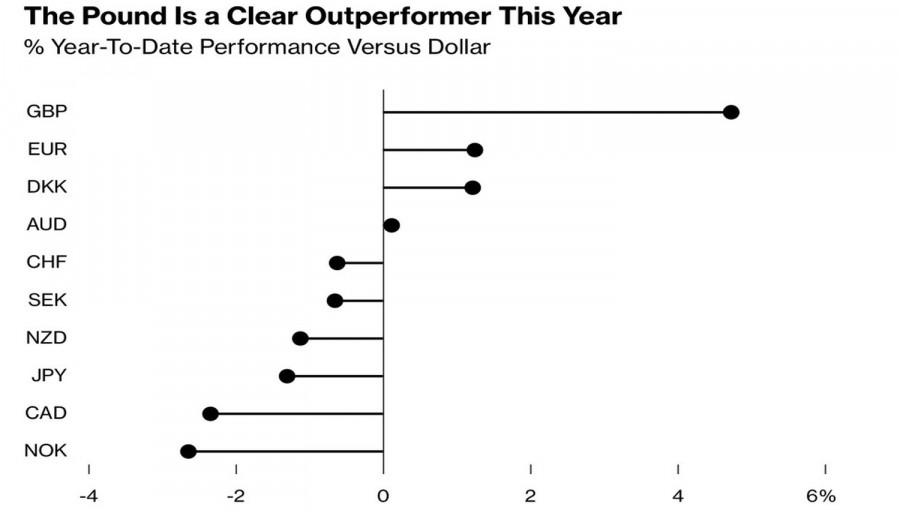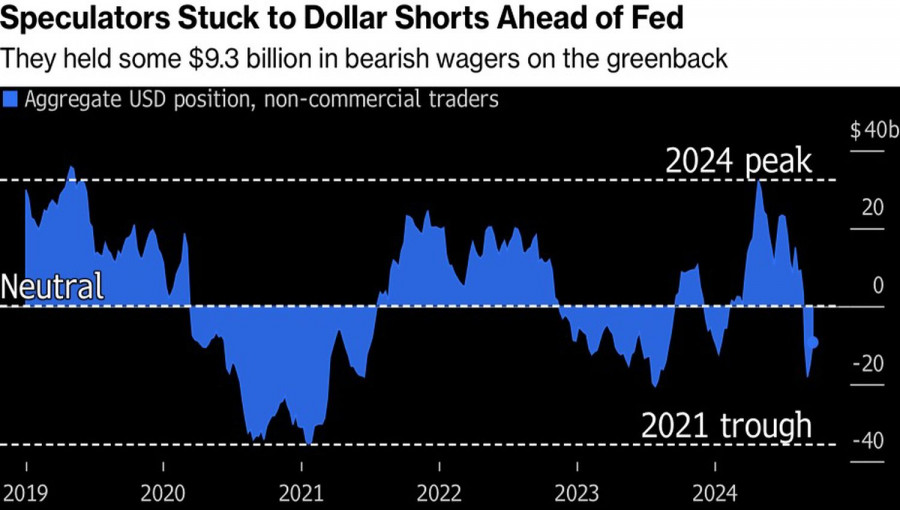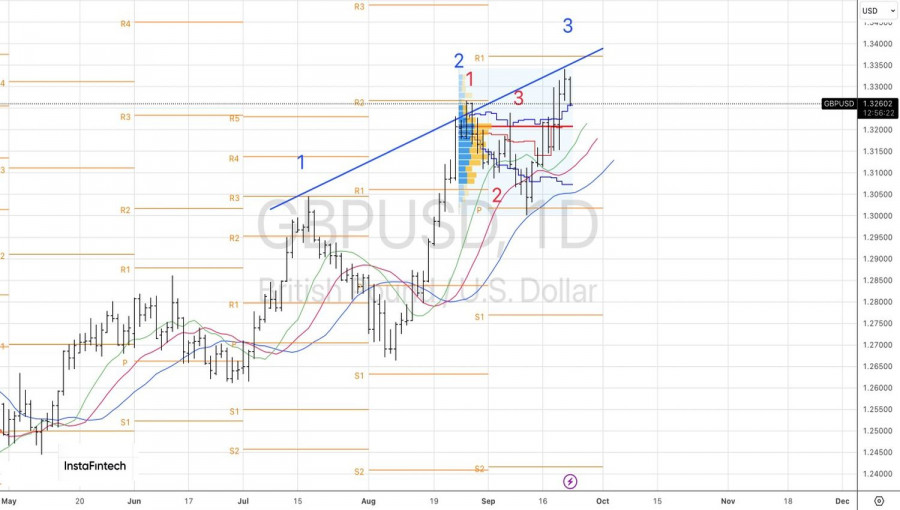
The Bank of England (BoE) exercised caution and did not follow the Federal Reserve down the path of monetary policy easing. With an 8-to-1 vote, it kept the interest rate at 5%, which allowed GBP/USD to soar to its highest levels since March 2022. The contrast with the Fed, determined to prevent a recession in the U.S. economy, was evident. However, overly inflated speculative long positions on the pound limit its potential for further strengthening, as demonstrated by the pair's reaction to the business activity data releases.
Dynamics of G10 Currencies
According to BoE Governor Andrew Bailey, inflation needs to remain low, so the BoE must be cautious and avoid cutting rates too quickly or aggressively. MPC member Catherine Mann believes that monetary policy should remain restrictive for an extended period. Unsurprisingly, with this rhetoric, the futures market reduced the scale of the anticipated monetary easing in 2024 from 50 to 42 basis points, enthusiastically welcomed by GBP/USD bulls.
Derivatives suggest that the interest rate will drop by 100 basis points to 4% by May 2025, while the federal funds rate will decrease by January. The pace of the Fed's monetary policy easing is faster than that of the BoE, setting the stage for the continuation of the GBP/USD rally. Mizuho International expects to see the pair at 1.34 by the end of this year and 1.40 by the end of next year.
On the contrary, HSBC believes the market underestimates the BoE's activity. A slowdown in the economy and inflation will require the central bank to cut borrowing costs by 225 basis points by the end of 2025, not 150 basis points as currently estimated by the futures market. This limits GBP/USD's potential for an upward journey and provides a basis for selling, especially since net longs on the pound are at their highest levels since 2014.
The story is quite the opposite for the U.S. dollar. Speculators are actively selling it in light of the Fed initiating its monetary easing cycle. Is it time to take profits?
Dynamics of Speculative Positions in the U.S. Dollar

Even a hint of negativity can lead to a pullback in the upward trend in such conditions. Disappointing business activity data from Germany and the Eurozone prompted investors to sell the euro and the pound. Moreover, the British Purchasing Managers' Index (PMI) figures were also disappointing. The manufacturing PMI in August stood at 51.5, falling short of Bloomberg experts' forecasts. Business activity in the services sector also felt out of sorts, slowing from 53.7 to 52.8.
Technically, on the daily chart of GBP/USD, the bears failed to capitalize on the 1-2-3 pattern. However, forming the Three Indians pattern brought them back to life after the pair soared to multi-month highs. Despite the sellers' attack, the sentiment remains bullish, so a bounce from 1.3255, 1.3230, and 1.3200 should be used to form long positions.